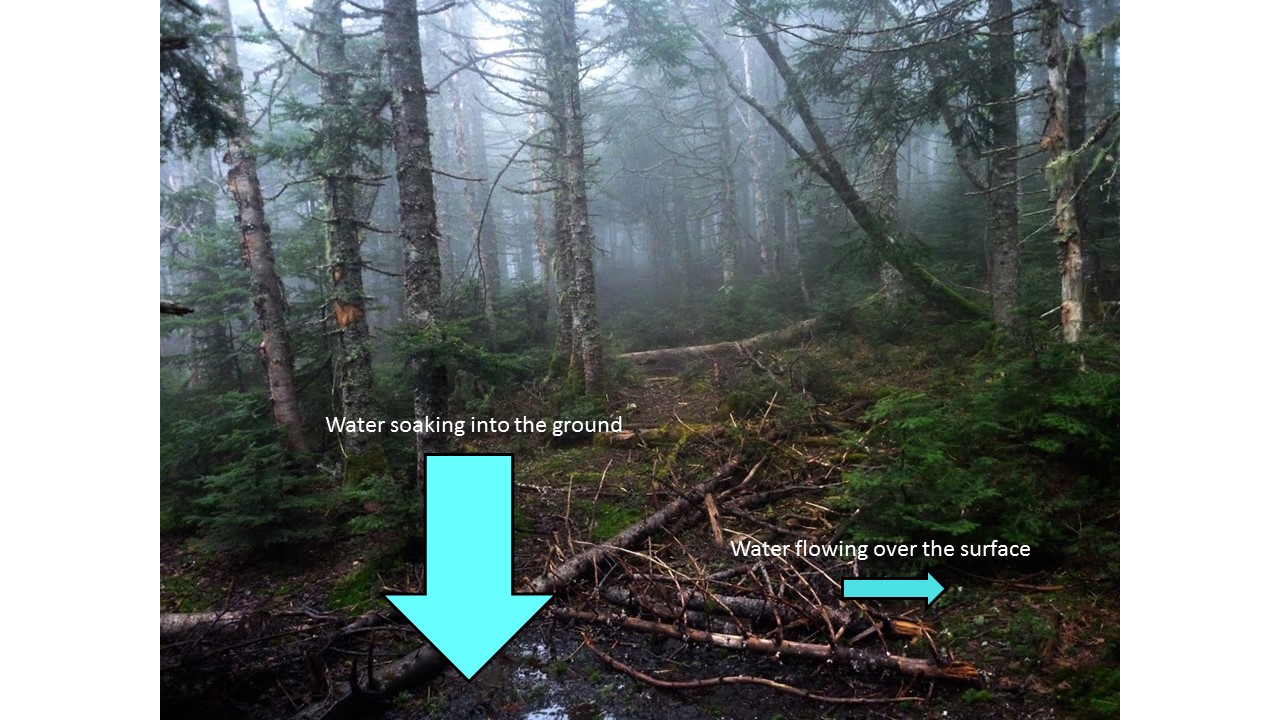News & Notices
- Karst Topography Webinar
- Macroinvertebrate Identification HandoutMacroinvertebrate Identification Handout
- Macroinvertebrate Identification GuideMacroinvertebrate Identification Guide
What is stormwater?
Rain, snow, sleet or ice melt flowing over land (stormwater) will pick up debris and pollutants along the way. Stormwater flows into a system of pipes, ditches and other stormwater infrastructure that empty directly into our streams and lakes. Stormwater is not treated at a treatment plant, so it is important to maintain land uses in a manner to minimize the opportunity for stormwater to pick up debris and pollutants as it flows through our watersheds.
What is a watershed?
A watershed is any area of land where water flows downhill from high points to low points. The low points are creeks, ponds, lakes, and rivers. We all live in a watershed, and what happens on land is directly connected to water quality and severity of flooding. You can Find what watershed you live in here.
The Relationship between Stormwater and Watersheds
Water flowing over the surface of the land is a part of the natural water cycle. In a natural setting without human interference the water tends to soak into the soil. In the Midwest, soil quality is typically very good and has open spaces for the water to infiltrate into the ground. This process is shown in the figure below.

However, in developed areas with houses and businesses, the soil is often covered with sidewalks, roads, buildings, or other materials that do not allow water to infiltrate into the ground. These hard, impervious surfaces change how water interacts with the land and causes there to be more water flowing over it straight into our waterways. This can lead to flooding, increased pollution in our water, and land erosion. Compared to the picture above, less water is able to soak into the ground and more water is flowing over the surface.

Polluted water enters lakes and rivers in two ways: point and non-point sources. Point sources are easy to identify because it comes from a pipe and can be traced back to the land use from which the pollution originated. Special permits issued under The Clean Water Act has been successful in reducing pollution from point sources. Non-point sources, or collective pollution is harder to control because pollution originates from many different sources and land uses.
Classic examples of non-point sources include water coming from parking lots and water flowing over fertilized lawns. Non-point sources, including stormwater, are significant contributors to water pollution and are difficult to regulate. However, through individual actions pollution can be greatly reduced. Here are some of the environmental concerns connected to stormwater:
Stormwater flowing over parking lots and roads can pick up antifreeze, gasoline, and oil that drips from cars, as well as heavy metals such as copper, chromium, lead and zinc.
Road salt used to melt snow washes directly into our water systems which increases salt concentrations in our waterways; and many aquatic animals and plants are sensitive to these salt concentrations.
With increased amounts of nutrients from lawn fertilizer, pet waste and phosphorus-based soaps dumped into the water, algae thrives and increases in population creating a "bloom" that eventually dies off. Dead algae is decomposed by bacteria and this leads to decreased amounts of dissolved oxygen (DO) in the water. Low DO can lead to fish kills and some algae can even produce toxins that are harmful to humans and wildlife.
Water running off pavement and roads can be very hot. A change in the temperature of the water can change the suitability for certain aquatic animals and plants to survive and reduce oxygen availability.
Water flowing over construction sites and picking up sand and grit from roadways can pollute the water in creeks, rivers, and lakes. Sediment can settle in neighborhood ponds, leading to infrastructure damage and expensive maintenance costs. Sediment is the most prevalent pollutant in Indiana waterways.
When a large amount of water surges into creeks and other waterways, it can be very destructive. Stormwater can also carry invasive species to water bodies.
Construction sites, bare spots in lawns and gardens, waste water from washing cars and trucks on driveways or in parking lots, and eroding stream banks.
Overused or spilled fertilizers, especially on lawns; pet waste; and grass clippings and leaves left on the streets and sidewalks.
Animal waste, garbage, and improperly treated sewage.
Car and truck exhaust, leaks and spills of oil and gas, and burning leaves and garbage.
Pesticides over-applied, pesticides applied before a rainstorm and spills and leaks.
Cars and trucks and galvanized metal gutters and downspouts.
Source: Clemson Extension, "South Carolina Home - A - Syst. An Environmental Risk - Assessment Guide for Protecting Water Quality"
What can I do to protect our stormwater system?
Some easy things you can do to protect our watersheds include:
It is up to the entire community to ensure we live in a healthy environment with safe water. If you have any questions or concerns about stormwater, please contact us at storm@co.monroe.in.us or 812-349-2565.